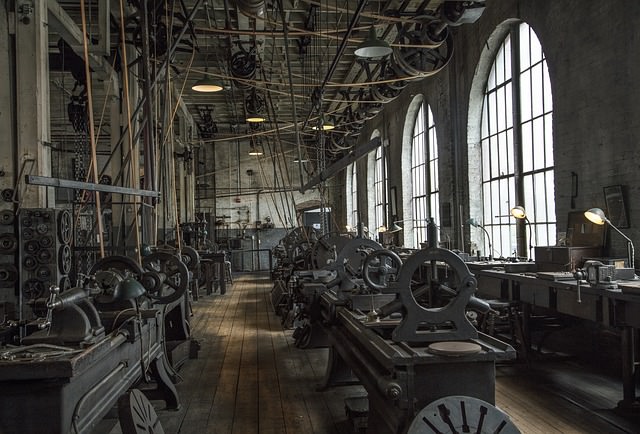How A Machine Shop Works
Machining is a craft where craftsmen use precision power tools and tools for cutting to take a solid block of material and turn it into something with a very precise, repeatable geometry. One common example of machining is turning a chunk of steel into an engine block.
 Another common example is using a lathe to take a piece of wood and turn it to make an intricately curved table leg. Machining is used on metal, woods, and various types of plastic. The places where this highly skilled craft is done are machine shops.
Another common example is using a lathe to take a piece of wood and turn it to make an intricately curved table leg. Machining is used on metal, woods, and various types of plastic. The places where this highly skilled craft is done are machine shops.
Machines
Machining in the 21st century is computer controlled in large part. This is done for objects that must adhere to extremely rigid geometric specifications (like engine blocks). But traditional machining still takes place. The main processes taking place in the typical machine shop are drilling, milling, and turning. But there are many, many other processes that go on in machine shops, including grinding, planing, sawing, and shaping.
Turning
Turning is a machining process that has been around at least as far back as the ancient Egyptians. Lathes are known to have been used in the Roman Empire, the Byzantine Empire, Greece, and Assyria too. The basic process is to hold a piece of material on a spindle, and then turn the spindle while a cutting implement is gently lowered onto the material.
Cuttings
The cutting tool cuts into the material and removes it as the lathe is turned. Today’s lathes are driven by a motor, and the particular machining done on a lathe is controlled by changing the lathe’s drive train configuration.
Spindles
Spindles on milling machines can be either vertical or horizontal. Sometimes milling takes place when the workpiece is held steady and the machining bit moves vertically, and sometimes it means that the spinning cutter or milling tool is held in place while the workpiece is moved against it.
Milling
Milling can be done manually, but many of today’s milling machines are controlled by computers. Computer controlled machines in machine shops are typically referred to as CNC machines, with CNC standing for “computer numerical control.”
Drilling
Drilling in machine shops is very similar in concept to the drilling that people do to make household repairs and projects. A drill bit on a drill press is lowered into the material to be drilled. Different drill bits are used to drill through different materials, which might be wood, metal, or plastic. The bit is rotated at high speed and advanced through the materials.
Chippings
Chips of material are pushed along the helical grooves in the drill bit. Much of the skill involved in drilling is choosing the proper drill bit so as not to adversely affect a material’s mechanical properties by creating residual stresses around the hole opening.
Machine shops have been around for centuries if you include the turning lathes that go back to ancient times. Today, machine shops do highly specialized jobs like chemical milling, laser cutting, and turret punching. Some of the things that come out of machine shops include medical instruments, scale models, engine blocks, electronic devices, and optical devices.
Modern machine shops have been around for over a century, but they really reached their peak between the two World Wars. Today’s machine shops are high technology plants, doing milling, turning, cutting, and boring to create objects with precision that was unimaginable only a few decades ago.
Leave your response!
You must be logged in to post a comment.